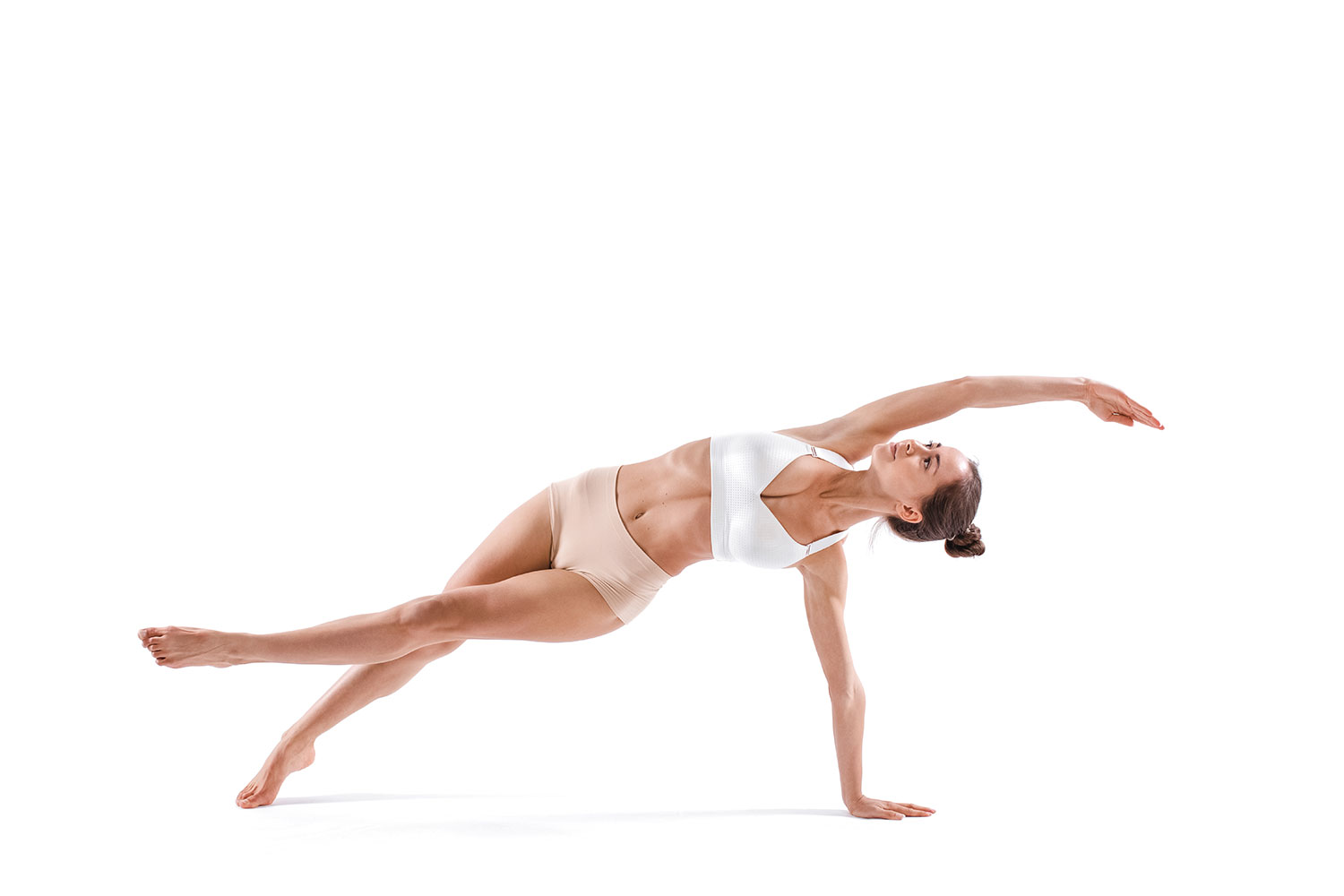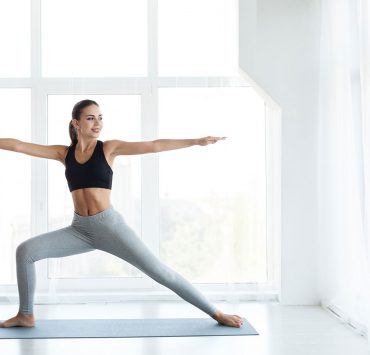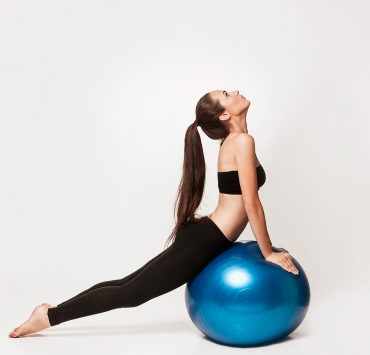
Paving the way for yogic living in Nebraska, Jacqueline Roberts…
Lead or follow? Stay or go? Push or release? Sometimes it can be difficult to know when to move forward, to put in your all and go for it and when to let go and allow things to happen naturally. This is all part of the balancing act of life, but it holds quite true in yoga practice as well.
Often we push ourselves to stretch a little further, press a little deeper, or go a little longer. This motivation can lead us to wonderful physical and mental breakthroughs, and it can challenge our own beliefs about ourselves. When we reach that next goal or see how much progress we’ve made, it can be incredibly powerful and encouraging.
On the flip side, we can’t always be pushing ourselves. We need a balance – we need some ease to balance out all of our effort. If we only ever let ourselves push and push, we will never enjoy the fruits of our labor. And we’ll be right on the path to burnout.
So let’s take a good look at how we can balance effort and ease. How can we combine the two for a wholesome life and yoga practice? This sequence is aimed at encouraging both effort and ease for a well-rounded, balanced practice.
Life in Balance
What is balance? This is a concept we are all trying to grasp and manage in our own lives. Our society seems to favor the extreme of accomplishment and hard-work. Of course, these are natural qualities of a go-getting society that loves a challenge to be the best that it can be. But too often we forget that for a balanced life, we need to let go sometimes.
In life, this can mean releasing a few of our “to-dos” and engagements that just aren’t working for us. It can mean taking time for self-care or just scheduling “nothing” time. In our yoga practice, it means releasing the desire to go further, deeper, and harder and enjoying the natural comfort of some over-looked poses. To blend effort with ease, we must accept that even “easy” things can be rewarding and productive.
A Sequence for Effort and Ease
When life feels a little too one-sided, take on this balanced sequence for effort and ease.
Garudasana — Eagle Pose

Start in Mountain Pose, finding stability in your feet planted firmly on the ground. Bend your knees slightly, then shift your weight to your right foot. Lift your left foot and cross the left thigh over the right. Wrap your foot behind the right leg and point your toes down to the floor. Maintain good balance on your right foot.
Now, stretch your arms forward and cross your arms with your right arm over the left. Bend your elbows with your arms now intertwined and perpendicular to the floor. Lift your arms up and point your fingers towards the ceiling. Rest here for a few breath cycles, then gently unwind your arms, then legs, and repeat on the left side.
Eagle is a twisty, tangled pose. It encourages us to practice balance, opening some parts while closing off others.
Ardha Chandrasana — Half Moon Pose

Start this pose by coming into Triangle Pose on the right side. Rest your left hand on your left hip. On an inhale, bend your right knee and slide the left leg up towards your head a few inches. Place the right hand firmly on the ground about a foot in front of the right foot.
Exhale and straighten your bent right leg, allowing the left leg to gently lift off the floor. The left leg should be parallel to the ground, straight, strong, and firm. Keep balance on the right leg, but don’t lock it – bend your knee slightly if necessary.
Twist your torso that your front body is in line with the wall ahead of you. You can keep the left hand resting on the left hip, or reach it upwards if you are an advanced student. Rest here for 5-10 breath cycles before lowering the left leg to the ground and returning to Triangle pose. Switch sides and repeat on the right side.
If you are like most, this pose will require quite some effort. Where do you feel most challenged? What comes easiest?
Virabhadrasana III — Warrior III Pose

Begin in a steady Mountain pose. With an exhale, step your feet apart, about 3-4 feet wide. Raise your arms and extend them out to the sides. They should be parallel to the floor. Extend your reach through the fingers to lengthen and expand. With your heels on the same line, turn your right foot outwards to the right. Turn the left foot to the left about 90 degrees. Bend the left knee over your left ankle while pressing into your right heel for a stable stance. If possible, bend the left leg until it is just parallel to the ground. Slightly stretch the left arm forward but keep the torso facing forward. Rest here for several breath cycles, then repeat on the right side.
The Warrior is our symbol of strength and power, but in Warrior pose you stand ready to take on the world. Your heart and chest are open, receptive to what comes your way.
Phalakasana — Plank Pose

From Warrior II, take a big arm swing to find the floor in plank. Make sure that your shoulders are aligned right over your wrists. Your arms should be perpendicular to the floor and your torso parallel. Imagine sending your tailbone back to the wall behind you, extending your spine and opening the neck. Stay here plank for a few breaths. Exhale and slowly lower knees to the ground or move into side plank, next.
Plank can be a tough pose for some of us, so to release some tension, listen to your body and see if you can’t allow a little ease into it. Are you holding tension too tightly somewhere? Could you release or strengthen in someway to settle in easier?
Vasisthasana — Side Plank Pose

The easiest way to get into Side Plank is from Plank pose itself. Ground yourself in the strength of your hands and feet, then lift the left leg and stack it on to the right foot. With a firm setting in the right hand and wrist, turn your hips and torso to face the side wall and raise your left arm above head. Fix your gaze on the left hand. Maintain your balance here and rest for 3 breaths. Then gently twist back to a plank pose and prepare to take on side plank on the opposite side.
Adho Mukha Svanasana — Downward Facing Dog Pose

After both Side Planks, return to your hands and knees in a tabletop position. Plant your hands and toes firmly on the ground, stretch the knees to come to a downward dog position. Start with the knees slightly bent and heels off the ground, then exhale and slowly straighten the legs bringing the feet fully to the ground if possible.Rest here for a few breath cycles. You can bend the knees in an alternating fashion to stretch the calves and hamstrings further.
Downward Dog is considered a pose of rest, do you feel this way? Find a steady balance and see if you can relax into the pose.
Salamba Balanasana — Child’s Pose

Come back to a tabletop position to transition into one of our best “ease” poses with Child’s pose. Kneel on the floor with your knees spread slightly wider than your hips and your bottom resting on your heels. Slowly lower your torso forward on an exhale and rest in between your thighs. Place your forehead to the floor, and your arms down at your sides. Enjoy the stretch between your shoulder blades, then raise your arms up to rest outward in front of you to stretch the back and shoulders. Rest here for a few minutes. See how your body settles into different positions as you breathe deeper into this pose of release.
Child’s pose is one of the most recognized poses of ease and rest. This pose often feels safe and comforting. Return to it often when you need to find balance.
Paripurna Navasana — Boat Pose

From Child’s pose, we will transition back up into Boat pose for a slight challenge. Round your spine up slowly, one vertebra at a time, until you are back in a seated position. Swing your legs out in front of you, sit tall, then lean back slightly. With an inhale, lift your legs up. You can keep them bent or extend them fully here. Extend your arms out parallel to the ground. Breathe deeply and try not to tense up your abdomen.
Tolasana — Scale Pose

On to Scale pose. For this one, you will need a set of two blocks, but you can use books if you don’t own yoga blocks, just make sure your stacks are at the same height. Stand on your knees and crisscross your legs beneath you. Sit on your crossed legs while you steady your hands on your blocks which are placed at shoulder’s width apart. On an exhale, extend your arms and lift yourself up off the ground slightly. Rest here for a breath or two, or as long as is comfortable. Take note of what feels easy here and what takes more effort. Where could you loosen or engage? On an exhale, gently release and come back to the floor.
Walking Meditation

After returning to the ground, slowly make your way to Downward Dog. From here, play around gently with your hands and feet, walking your feet up to your hands gradually and intuitively as you see fit. Eventually make your way to Mountain pose. Rest here a moment, then slowly move your feet in place, or walk around the room if you want. You aren’t going anywhere in particular – just stay present in the movement and interact with each step. Breathe deeply and transition foot to foot slowly and intentionally.
The Perfect Balance
Hopefully this sequence helps you to challenge your idea of balance and maybe even invite you to practice a little more ease with your effort. Sometimes it is in the “easy” postures that we become most aware of our blockages and find room to grow. We can’t always push in the same direction. We may achieve our goals here, but we won’t be open to other areas where we could expand. Let in a little ease with your yoga practice, and in your daily life off the mat.
What's Your Reaction?
Paving the way for yogic living in Nebraska, Jacqueline Roberts is adored by her students as a constant source of support and inspiration. A knack for writing allows her to share what she has learned with the world.














